In a Boiling, Acidic Underwater Crater Where No Animal Should Survive, Sharks Are Not Only Alive—they’re Thriving
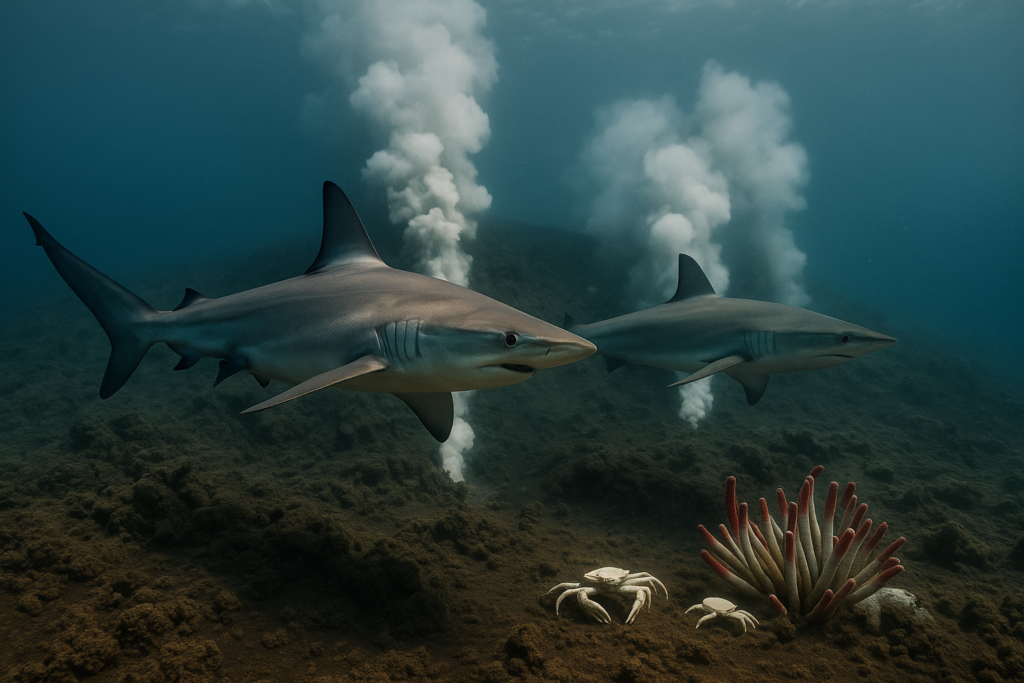
In the depths of an active volcano, where the ocean’s temperature climbs to unbearable heights, and sulfuric acid fills the waters, survival seems impossible. Yet, in the heart of this volatile environment, scientists have discovered something that defies belief in sharks. Not just surviving but thriving in the crater of Kavachi, one of the most active underwater volcanoes on Earth. Their presence in this perilous environment raises profound questions about adaptability, survival, and the remarkable resilience of marine life. Here’s how they’re managing to survive and why scientists are left stunned by this miraculous discovery.
Welcome to Kavachi—The Shark Volcano
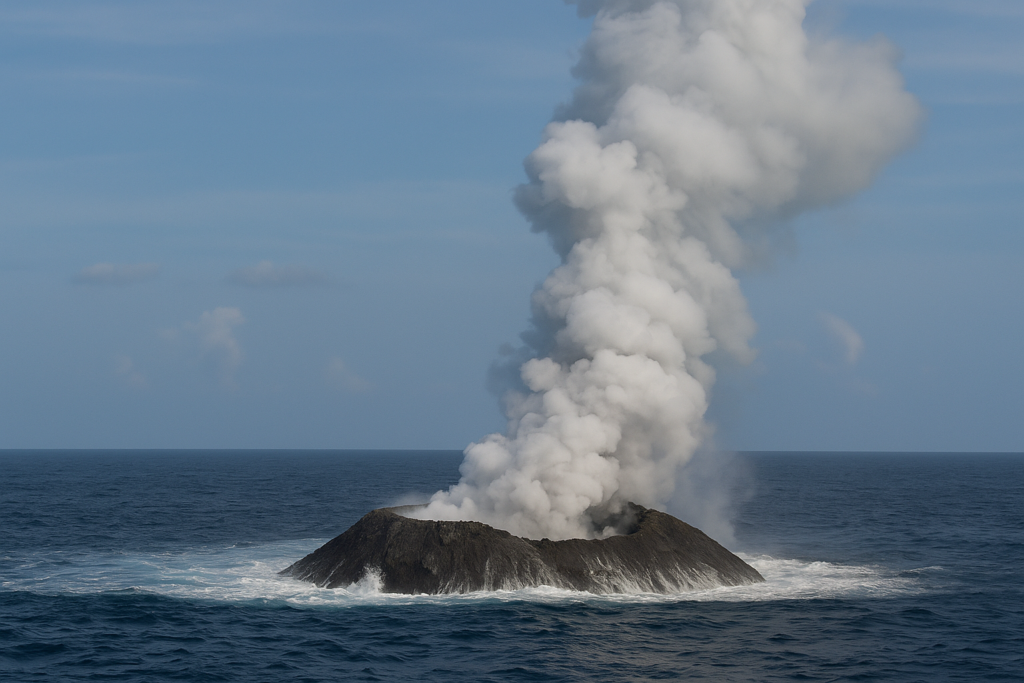
Kavachi is one of the most active underwater volcanoes located in the Solomon Islands. Its crater is filled with superheated water, sulfuric clouds, and volcanic acid, creating an environment hostile to most life forms. Temperatures in the volcano can exceed 400°F, and the acidic water makes survival almost impossible. Despite this, in 2015, researchers dropped a camera into the depths to measure volcanic plumes and discovered something astonishing, sharks. Hammerhead and silky sharks were spotted swimming in the active volcano, appearing completely unaffected by the lethal environment. This unexpected find shocked scientists, as it challenged everything known about life in extreme conditions. The discovery suggested that life could adapt to environments previously thought uninhabitable.
The volcano’s extreme conditions make it seem impossible for marine life to survive. With boiling water, high acidity, and a near-total lack of oxygen, it’s one of Earth’s most hostile environments. Yet, these sharks not only survived but thrived in the crater, defying all expectations. Their resilience in the face of such extreme conditions is truly inspiring. Scientists have long believed that marine life requires cooler, oxygen-rich waters to survive, but these sharks proved otherwise. The research team’s discovery raised critical questions about how life could adapt to such extreme circumstances. Kavachi’s sharks have become a significant subject of study, pushing the boundaries of what was previously thought possible in marine biology. Their survival is a testament to the resilience of life in the face of extreme adversity.
Sharks Were Living Inside the Crater
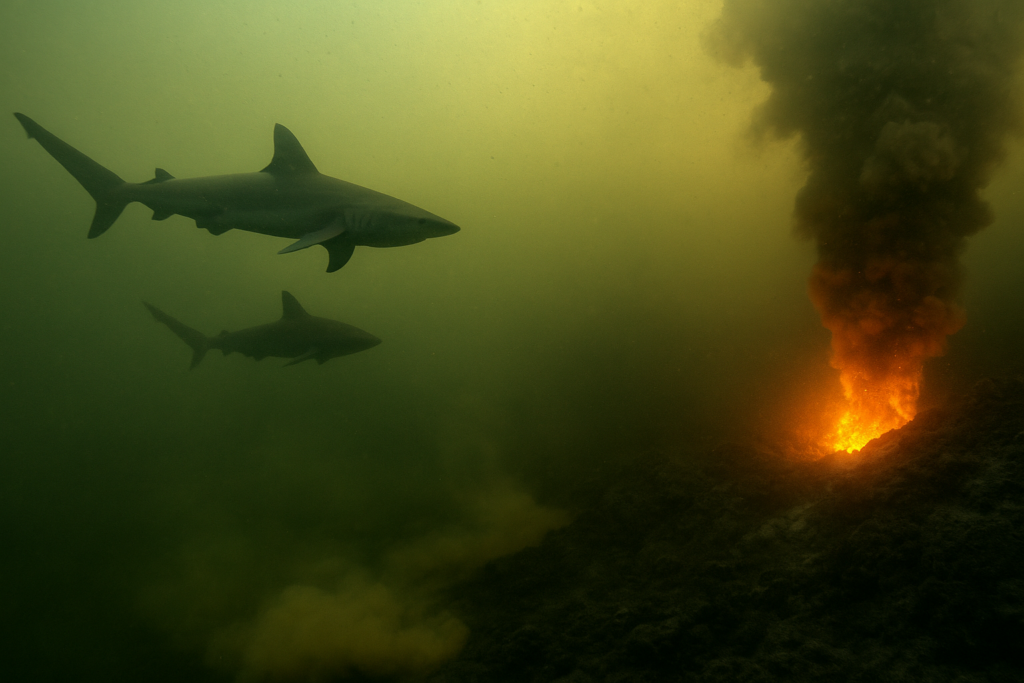
The footage from the deep-sea camera revealed hammerheads and silky sharks swimming freely inside Kavachi’s crater. The sharks appeared unaffected by the boiling, sulfur-filled waters, which would typically be deadly to most marine life. These sharks were not just passing through; they seemed to be living and hunting inside the active volcano, thriving in an environment that should kill most other creatures. Hammerheads, with their iconic wide heads and silky sharks, known for their speed, appeared comfortable in these harsh conditions. Scientists were stunned, as no one had ever seen sharks in such extreme volcanic waters before. This discovery changed everything we thought we knew about the adaptability of marine life. The existence of these sharks in the crater challenges the idea that some environments are too harsh for complex life.
Sharks typically thrive in cooler, oxygen-rich waters, making their presence in a boiling, acidic environment truly puzzling. How do these apex predators survive when most other marine animals would be boiled alive? The sharks’ presence in Kavachi raises more questions about their ability to tolerate extreme conditions. Could they have developed special adaptations to cope with the high temperatures and low oxygen levels? Or might they be using specific zones within the volcano that are slightly more tolerable? The discovery forces researchers to rethink their understanding of life in extreme environments and opens new possibilities for studying adaptation in extreme marine ecosystems.
The Water Should Be Lethal
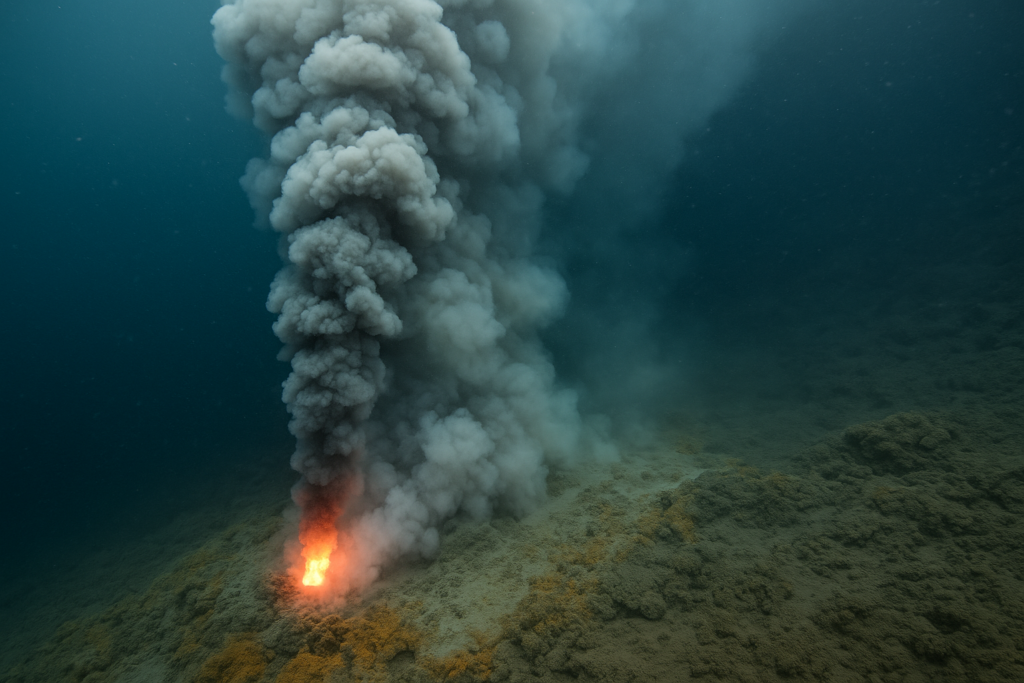
Kavachi’s water conditions are nearly lethal for any marine life. The temperature inside the volcano can reach over 400°F, which would typically be fatal to most aquatic animals. The water is highly acidic, and the low oxygen levels make it nearly impossible for most creatures to survive. Sulfur clouds from volcanic activity contribute to environmental toxicity. Most marine life would be immediately killed by the extreme heat, acid, and lack of oxygen, but the sharks seem to be unaffected. It’s hard to imagine how any creature could withstand such harsh conditions. And yet, these sharks appear to thrive in an environment that should be deadly.
Marine biologists are still trying to understand how these sharks manage to survive. One theory is that they’ve developed special biological adaptations, such as enzymes or proteins, that protect them from the toxic environment. Others believe that the sharks may use certain outer zones of the volcano where conditions are less extreme. Despite the hostile conditions, the sharks continue to live and hunt inside the crater, suggesting they have found a way to cope with the water’s high acidity and temperatures. Their survival in such an extreme environment challenges the notion that only certain types of organisms can endure in toxic or high-temperature waters. It’s a mystery that has yet to be solved.
No One Knows How They Survive

The survival of these sharks in the extreme environment of Kavachi remains a mystery that continues to puzzle scientists. The combination of boiling water, acidic conditions, and low oxygen levels in the volcanic crater is likely to be lethal. Yet, these sharks seem to navigate the waters effortlessly, showing no signs of distress. Some researchers speculate that the sharks may have evolved special mechanisms to detoxify the water or adapt to extreme conditions. Others suggest they may be using the outer parts of the crater, where conditions are slightly less harsh. However, there is no definitive answer as to how they survive, leaving this as an intriguing area for future research.
This discovery has opened up new avenues of research into the survival of marine life in extreme conditions. The question of how these sharks manage to live in such a volatile environment has captured the interest of scientists worldwide. This discovery could lead to new insights into the evolution of life in hostile ecosystems. The sharks’ ability to thrive in a place where no one thought life could exist raises fascinating questions about the adaptability of marine species. For now, scientists continue to investigate how these sharks have managed to conquer such an inhospitable environment.
The Discovery Was Totally Unexpected

The discovery of sharks living in Kavachi was a complete surprise. When scientists dropped a deep-sea camera into the volcanic crater in 2015, their goal was to measure volcanic plumes and study the chemical composition of the surrounding waters. They had no idea they would find sharks living inside the active volcano. The footage, showing hammerhead and silky sharks calmly swimming through toxic, boiling waters, was shocking. This unexpected discovery defied all expectations and forced scientists to reevaluate their assumptions about life in volcanic ecosystems. The researchers had assumed that such extreme conditions would make it impossible for complex life to exist. Instead, they found apex predators not only surviving but thriving in the heart of the volcano.
The discovery of sharks living in Kavachi sent shockwaves through the scientific community. Sharks had never been documented as living in such a deadly and extreme environment before. This finding was so unexpected that it shifted the focus of marine biology toward the study of extreme environments and the adaptability of species. The footage went viral and sparked widespread media attention, with many people stunned by the idea that sharks could survive in such hostile conditions. What had been intended as a routine scientific study turned into a groundbreaking discovery with global implications for marine biology, opening up new avenues of research and challenging our understanding of life in extreme environments.
It’s Not Just Sharks—Other Creatures Live There Too
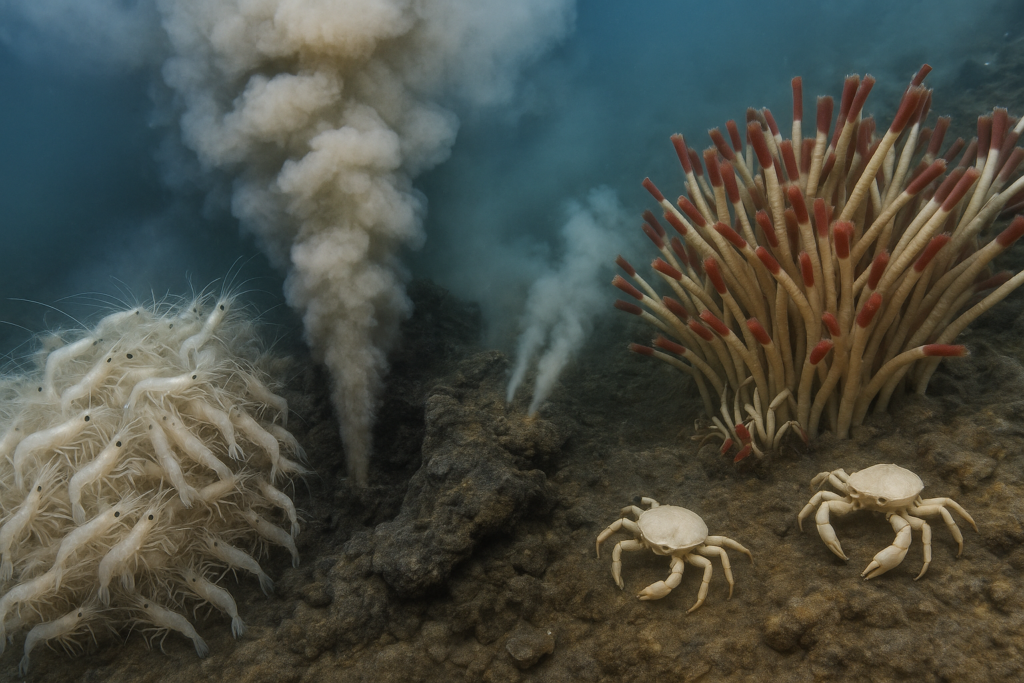
Kavachi’s ecosystem isn’t limited to sharks. The deep-sea camera also captured footage of stingrays, fish, and even microbial life living inside the volcano. These findings suggest that Kavachi may support a complex, albeit extreme, ecosystem. The presence of stingrays and various fish species indicates that more creatures have found a way to survive in the volcano’s waters. Microbial life, which typically colonizes extreme environments, could play a critical role in sustaining this ecosystem. These tiny organisms may be breaking down toxins or aiding in the filtration of water, creating a more stable habitat for larger creatures, such as sharks.
The discovery of microbial life in such an extreme environment is particularly significant. Microorganisms are often the first to colonize harsh and hostile environments, and their survival is crucial to the broader ecosystem. If these microbes can thrive in Kavachi’s toxic, volcanic waters, they may help support the larger organisms living there. The presence of multiple species living in the volcano challenges our understanding of how life can adapt to Earth’s most extreme ecosystems. Kavachi is a thriving underwater ecosystem, providing new insights into the resilience of life in extreme conditions.
The Volcano Could Erupt at Any Time
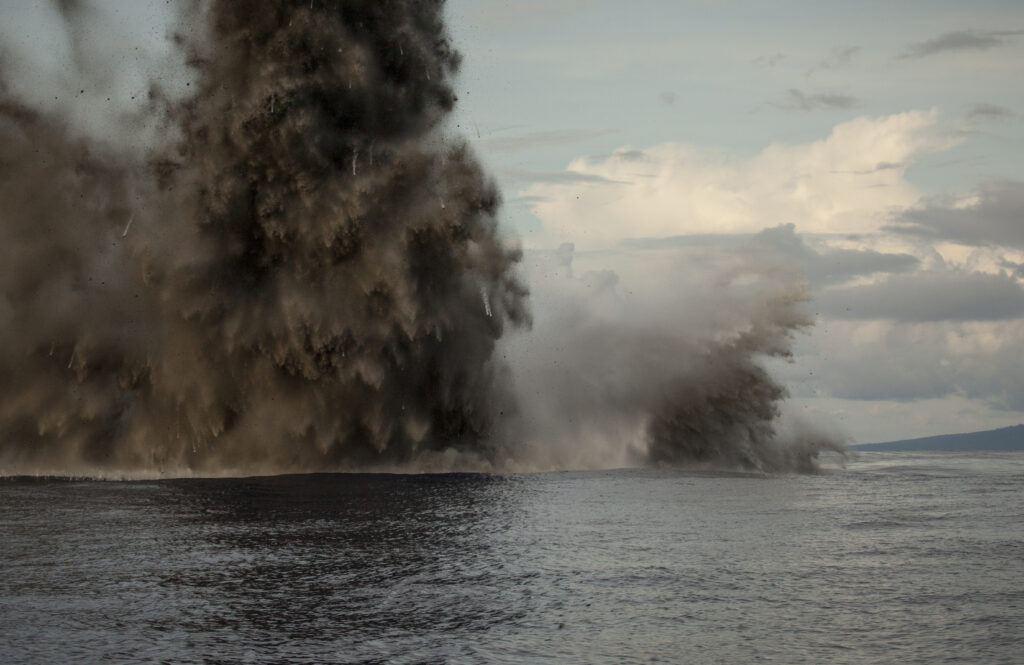
Kavachi is one of the most unpredictable volcanoes on Earth, erupting multiple times over the past few decades. This makes the sharks’ existence even more remarkable. They are living in an environment that could explode at any moment, wiping out everything in its path. Volcanic eruptions could decimate the entire ecosystem inside the crater, yet the sharks continue to live in these conditions. This adds a level of danger to their survival that few creatures face. The frequent eruptions raise new questions about how the sharks cope with this constant threat.
Despite the volcano’s unpredictable nature, these sharks appear to be thriving, suggesting they have adapted to live in the presence of the threat of eruptions. It’s possible that they have evolved strategies to avoid danger, such as seeking out safer areas when volcanic activity increases. However, no one knows for sure. What is clear is that these sharks live in a high-risk environment, constantly exposed to the possibility of a deadly eruption. Their ability to survive in such a volatile place makes them even more fascinating and mysterious.
Scientists Are Calling Them “Volcanosharks”
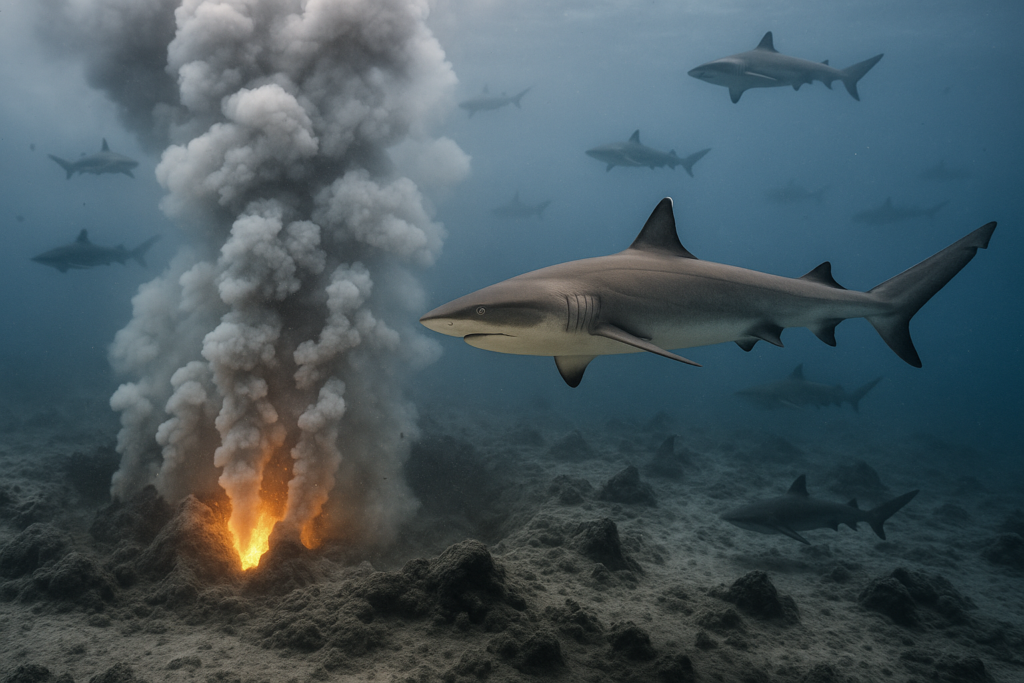
The term “Volcanosharks” has emerged as a catchy nickname for the sharks living inside Kavachi. While not an official scientific term, it captures the wonder and mystery surrounding these creatures. “Volcanosharks” symbolize the resilience and adaptability of life in extreme environments. The name also highlights the extent to which we still don’t know about how organisms can survive in such harsh conditions. It’s become a symbol of the unexpected nature of this discovery and the new frontiers of marine research.
Though not recognized as an official term, “Volcanosharks” has become popular in both scientific discussions and media coverage. It has a certain flair that makes the discovery easier to recall while also highlighting the extraordinary nature of these creatures. The term represents not only the sharks but also the larger mystery of how life can thrive in volcanic ecosystems. These “Volcanosharks” challenge our assumptions about what is possible in nature and open the door to new research into extreme environments.
The Footage Sparked Global Fascination

When the footage of the sharks living in Kavachi was released, it immediately captivated people around the world. The idea of apex predators surviving in boiling, sulfur-filled waters seemed like science fiction, yet it was real. The discovery sent shockwaves through social media and news outlets. People were fascinated by the idea that sharks could survive in such extreme conditions, and the footage quickly went viral. The discovery sparked a global conversation about the limits of life on Earth and the remarkable resilience of life forms.
The footage raised fascinating questions about survival and adaptation in extreme environments. People were shocked by the idea of sharks living in an underwater volcano, and the discovery challenged popular assumptions about what is possible for marine life. The media coverage, coupled with the scientific implications, made the Kavachi sharks a sensation. The story not only piqued the curiosity of the general public but also encouraged new research into the survival of life in the world’s harshest environments.
This Could Change What We Know About Survival

Kavachi’s sharks have forced scientists to rethink the limits of life. If sharks can survive in an underwater volcano with boiling, acidic waters, what other forms of life might thrive in extreme environments? This discovery challenges our understanding of life’s adaptability and opens up new avenues for research. Scientists are now more eager than ever to explore the potential for life in environments we once thought uninhabitable, like the icy depths of the Arctic or even Mars.
The study of Kavachi’s ecosystem is already reshaping our understanding of extreme evolution. The volcano’s sharks have demonstrated that life is far more resilient than previously believed. As scientists continue to investigate how these sharks survive, they are uncovering new information about the survival strategies of life on Earth and beyond. If life can persist in such a harsh environment, it raises exciting possibilities about life in the universe. The Kavachi sharks could be the key to understanding how life can endure in the most extreme conditions.
This article, Scientists Found Sharks Living Inside a Volcano was first published on dailyfetch.net.


